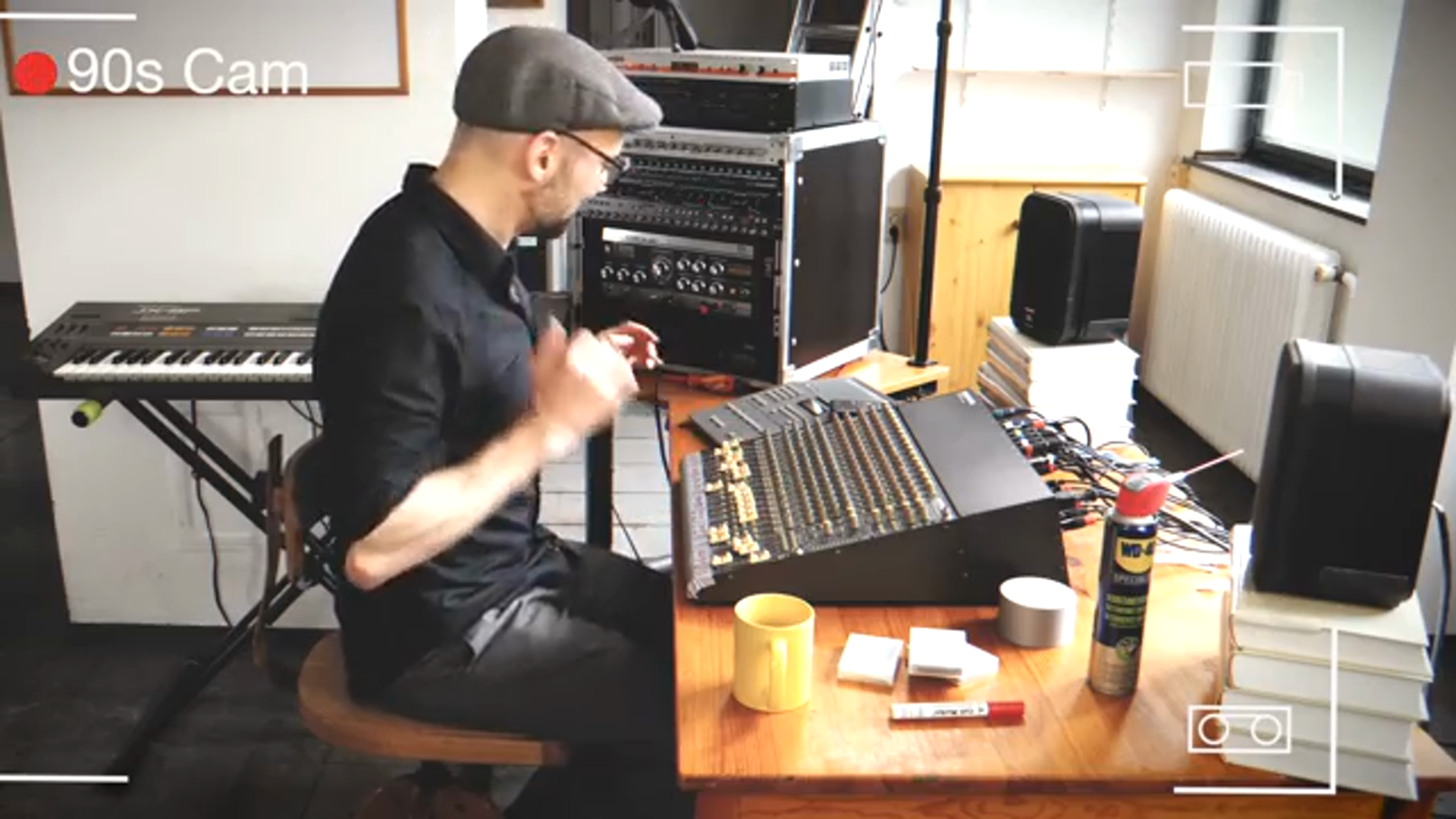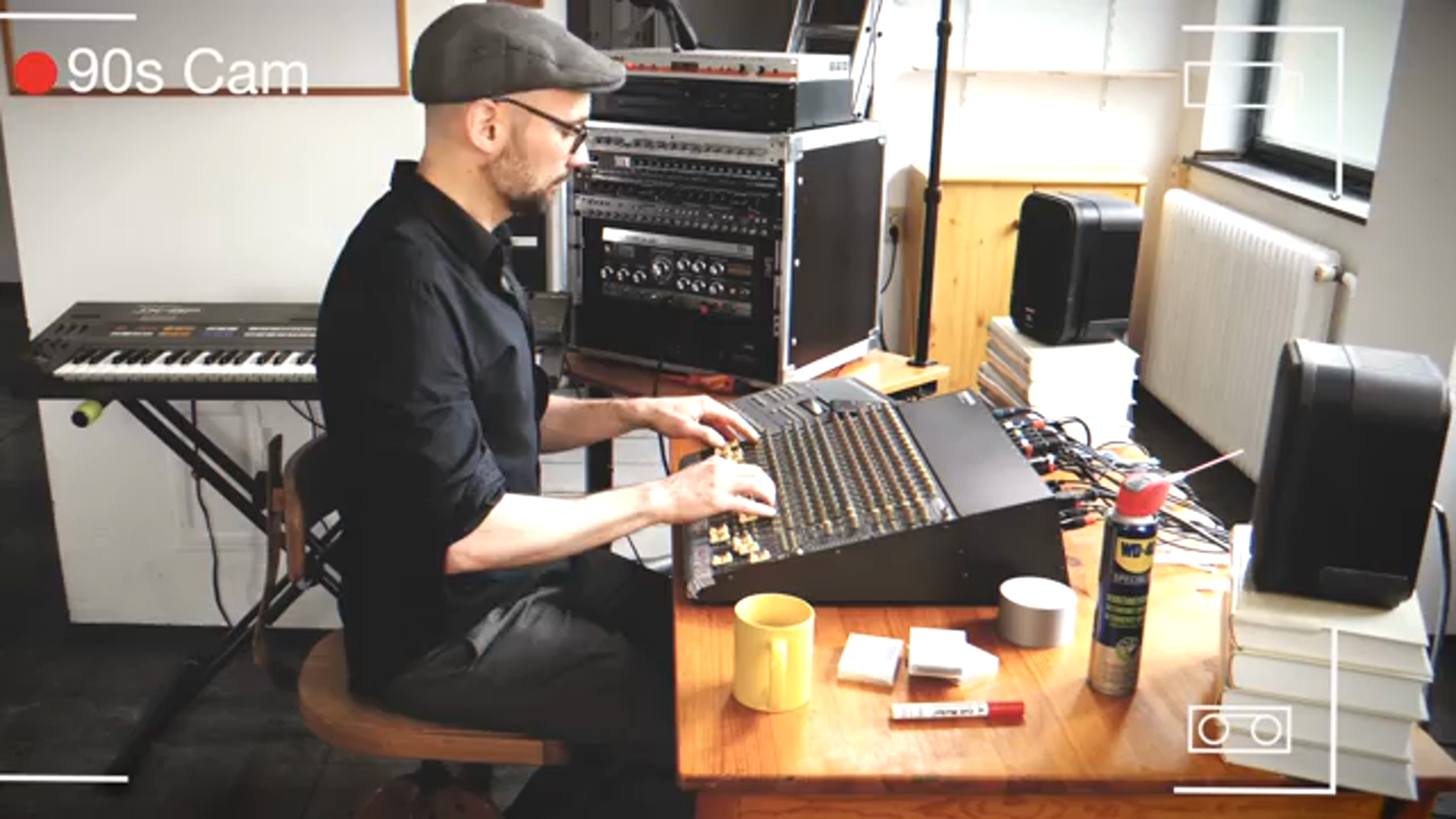Join AudioPilz as he dives into his teenage dream of building a 90s dance music setup, exploring vintage synths and drum machines. Expect technical quirks and nostalgic riffs in this entertaining critique.

21. June 2025
JET
AudioPilz and the Authentic 90s Dance Music Setup: A Proper Nostalgia Trip
Alesis 3630 Compressor, Alesis ADAT XT, Alesis MMT-8, Doepfer MS-404, Fostex D-10 DAT Recorder, Jomox Airbase 99, KORG Multi-FX unit, Mackie CR-1604 VLZ, Novation Bass Station Rack, Roland JV-1080, Roland JX-8P
The Retro Quest Begins
Florian Pilz, under his alias AudioPilz, embarks on a nostalgic journey to recreate a 90s dance music production setup. It’s a dream he’s had since his teenage years, now coming to life in his Vienna studio. The goal is simple: assemble a setup using only gear from the last millennium. As fans of his channel know, AudioPilz is all about mixing humour with deep technical dives, and this episode promises to deliver both in equal measure. With a tone bordering on satire, he warns viewers to be mindful of romanticising past workflows. Not everything from the 90s was as straightforward as one might recall. Nevertheless, the video sets the stage for a dive into a collection of synths and machines that defined an era. The allure for many lies in this very unpredictability, a creative chaos that contemporary DAWs often lack. Grab your Technics and trench coat; this is going to be a blast from the past.

"Build an authentic 90's dance music production setup including synths, drum machine, recording gear and sequencer."
Synths and Their Stories

"Imagine a TR-808, a 909 and a sci-fi aircon going on a 72-hour bender in 90's Berlin..."
AudioPilz kicks off with the Novation Bass Station Rack from 1995, admired for its role in the mid-90s analog revival. Unlike the iconic 303, it features dual DCOs and flexible modulation, making it a favourite amongst the underground elite like Underworld. Next up is the Doepfer MS-404, the precursor to the Eurorack craze with its compact, modular-inspired design. It’s got the simplicity of punk rock but moves at a synthpop pace. With an LFO faster than a speeding bullet, it’s a dream for sound designers.
We then voyage to the Roland JV-1080, the ROMpler that was practically a studio staple in every 90s genre. Legendary for its multi-timbral capabilities and distinct Roland tones, it serves more menu options than a dodgy backstreet kebab shop. AudioPilz reminds us that even these powerhouse machines have their quirks, such as the often cumbersome menu diving. To round off, there’s the Jomox Airbase 99, a drum machine that’s like a TR-808 and a 909 having a chaotic bender in Berlin’s club scene. It’s a programming nightmare but worth every headache for its unmatched sound quality. To play a non-synth, the Roland JX-8P, though from 1985, adds a layer of authenticity, serving as the era’s quintessential keyboard for those who knew a piano from a synth pad.
Sequencers and Sonic Command
Sequencers, the maestros behind the madness—AudioPilz dives into the Alesis MMT-8 from 1987. Known for its rugged reliability, it still holds its ground against more modern devices. AudioPilz ties this piece of vintage tech to dance music legends like Daft Punk and Orbital, who used it for live performances back in the day. The MMT-8 lets users record 8 MIDI tracks with a vibe as raw as a battle-scarred venue filled with anarchic crowds. While not the easiest to use, its hands-on approach resonates with purists who shun screens for tactile interfaces. The setup is powered by the JX-8P’s keyboard functionality, highlighting an era when musicians craved the physical connection between action and sound. AudioPilz captures the charm of a time when these tools were the cornerstone of any serious dance music producer’s arsenal.
Mixing and Effects—The Spice of Sound
AudioPilz stands behind the stern facade of the Mackie CR-1604 VLZ mixer, a piece renowned for bringing studio-grade mixing into smaller, home-friendly formats. Known for its ‘pushed into the red’ sound, it’s favoured by masters like Liam Howlett of The Prodigy. It’s more than just a mixer; it’s the life of the party, bringing the chaos to order, or vice versa.
In the effects department, it’s a treasure trove of quirks. The KORG Multi-FX unit from 1987, albeit obscure, draws interest mainly due to its TV-style remote control—charmingly anachronistic. AudioPilz loves throwing in Roland’s Space Echo, a must-have for any setup attempting to echo the spirit of the 90s. Paired with the Alesis 3630 Compressor, known for shaping the Daft Punk sound, it’s like assembling a symphony with a collection of rogue band members. Each piece of kit contributes its own character, and sometimes, unpredictability is the secret ingredient. The result? A spontaneous, gritty synthesis of euphoria and nostalgia that embodies the 90s dance culture.

"The favorite mixer of Liam Howlett of the Prodigy and its bigger yet sonically similar 8 Bus sibling..."
Recording and the Final Take
When it comes to capturing the chaos, AudioPilz turns to the Fostex D-10 DAT Recorder. Though its tape transport is a bit cranky, it remains a staple for capturing that raw authenticity digital can’t replicate. Using it as an A/D converter, he maintains the classic sound while dodging the pitfalls of obsolete technology. The Alesis ADAT XT from 1996 further cements the retro process, famous for its ability to offer multiple tracks on digital tape—an absolute game-changer back in the day.
Syncing up these pieces of antiquated gear to operate as a cohesive unit is no small feat. AudioPilz jestingly compares the jumble of connections to assembling a Frankenstein monster, complete with joystick cables and temperamental sync units. It’s a ritual for those who enjoy the tactile dance of dials and faders over the sterile precision of a modern DAW. In typical AudioPilz fashion, he walks us through the synching process with the casual flair of a seasoned pirate navigating unpredictable seas. It’s all an exercise in bringing a vintage soundscape back to life, resonating with those who cherish the old-school approach to music production.
Reflections on Nostalgia and Modern Tech

"Regardless of how much I like both the music and production techniques of the time, I prefer affordable modern recording environments..."
To cap this nostalgia-driven escapade, AudioPilz reflects on the wisdom of simpler times versus today’s advanced tech. He concedes that while the 90s setup has its romantic charms, the intricate sync procedures, cumbersome menus, and aged gear prices are worth a fair bit of head-scratching. Modern recording solutions are far more substantial, offering convenience and affordability. However, there’s a tongue-in-cheek sense of authenticity in using equipment with as much personality as performers.
AudioPilz leaves us pondering whether a roguish mix of old and new creates the perfect setup. The project is evidence of his deep-seated love for an era infamous for its innovation and lack of polish. For the audience, it’s a testament to the joy of hands-on experimentation in a sea of slick interfaces. One is reminded of the 90s’ chaotic ‘anything-goes’ attitude, embodied by figures like The Prodigy and Daft Punk, where creativity was king and convention often took a backseat.
Latest articles
Watch on YouTube:
https://www.youtube.com/AudioPilz
Links from AudioPilz:
Sponsored links:
If you purchase via these links, we may earn a small commission – at no extra cost to you.
🔗 Check price on Amazon
🔗 Check price on Amazon
🔗 Check price on Amazon
🔗 Check price on Amazon
🔗 Check price on Amazon
🔗 Check price on Amazon
🔗 Check price on Amazon